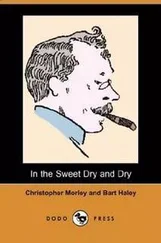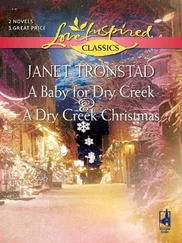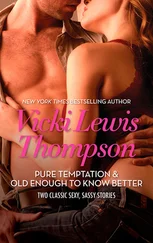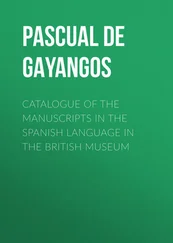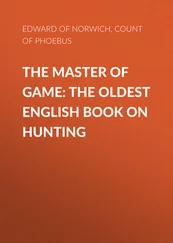In several articles, R.I. Page calls for scholars to pay more attention to dry-point glosses, which, as Beinecke 401New Haven, Yale University Beinecke LibraryMS 401[24/K:12] shows, can still be found in large numbers even in well-known and well-studied manuscripts. I would like to add encouragement for such study. A large body of Old English remains hidden and unexplored which will add to our knowledge of both the Old English lexicon and the workings of the Anglo-Saxon classroom. (Rusche 1994: 203)
More than 100 years after the publication of the first major edition of OE dry-point glosses by A.S. Napier (1900), it seemed to me in order to establish a first comprehensive view of this particular subject by compiling the information that is presently available in the literature. I decided to collect everything I could find on the subject of OE dry-point glosses in order to establish a list of MSS known to contain OE dry-point glosses, which could form a first reference point for the comprehensive study of these glosses.3 I asked Prof. Dr. Andreas Fischer – who had sparked my interest in Old English in the first place back in my undergraduate studies – whether I could write a Ph.D. thesis under his supervision on the topic and he was so kind to support my plans.
Probably the one property of dry-point glosses that has the most wide-reaching consequences for their study is their bad visibility. The extremely low contrast that is provided by the mere deformation of the parchment surface is quite markedly different from the sharp contrast that even the poorest of inks will produce. Consequently, since dry-point glosses are usually anything but conspicuous, even previously published glosses may be overlooked by new generations of philologists. This seems to have happened with the dry-point glosses in Salisbury, Cathedral 38Salisbury, Salisbury Cathedral LibraryMS 38 [31/K:378], for instance. Although edited by Napier (1893), they were overlooked by Gwara (2001a, 2001b), who was apparently not aware of Napier’s additions to Logeman’s (1891) first edition of many of the glosses in that MS. Against the backdrop of Gwara’s continued (1993–2001), thorough and awe-inspiring work on ALDHELM glosses – with a pronounced focus on dry-point glosses – it is beyond doubt that his failure cannot be considered a mere slip, but must be seen as a structural failure in this field of research: The lack of a centralized and regularly updated catalogue of relevant MSS tends to leave the researcher in doubt whether all the relevant secondary sources have been identified. Furthermore, in the absence of a bibliography or a register documenting the state of research, what appears to be a discovery may turn out to have been edited before, as is the case with the dry-point glosses edited by McGowan (1998) from London, BL Royal 5. E. xiLondon, British LibraryRoyal 5. E. xi [19/K:252], which had already been edited by Gwara (1993; 1996b), though with partly differing results. The present compilation is faced with that same difficulty and it is easily possible that important resources have not been identified. Therefore, the resulting Catalogue may serve as a point of reference against which new finds can be compared.
It would be highly desirable for the advancement of the study of OE glossography to have a Catalogue of Old English Gloss Manuscripts at disposal, analogous to Bergmann and Stricker’s Katalog der althochdeutschen und altsächsischen Glossenhandschriften ( BStK ). The study of OE glossography as a scholarly field, however, seems much further away from such an achievement than it was in 1986, when the leading OE gloss scholars met in Brussels, and a comprehensive approach to the study of OE glosses was felt to be on the verge of the possible.4 The plans discussed there have not materialized, so my Catalogue is also meant as a specialized contribution towards such a co-ordinated Catalogue of Old English Gloss Manuscripts .
In some respects, the Catalogue given here represents an enhanced subset of Vaciago’s (1993) little-known Old English Glosses to Latin Texts: A Bibliographical Handlist , which lists 157 MSS and which, in turn, represents a subset of Ker’s (1957) magisterial Catalogue of Manuscripts Containing Anglo-Saxon . The rather specialist Catalogue presented here, however, has a much narrower depth of field than both Vaciago’s and Ker’s directories: it focuses on a specific way of adding writing to a MS, namely without any colouring matter. Such writing is easily overlooked, both in the MSS and in the secondary literature, so the Catalogue given here aims at giving Old English dry-point glosses additional profile by appreciating them as a materially (albeit not directly) related group in the hope that this approach may raise awareness both with gloss scholars and with palaeographers of the fascinating possibilities that are hidden in this particular kind of written data with its characteristic peculiarities and difficulties.
2. Terminology and Scope
2.1 Vernacular Glossing in Anglo-Saxon England
2.1.1 Additions in Anglo-Saxon Manuscripts
Many extant medieval MSS do not only feature a main text (or several main texts in sequence), but also additional written material that can range from a couple of dots in the margins to a complete poem added on a previously empty part of a page.glossesterminology In the traditional terminology of OE glossography, only a particular sub-group of additions is referred to as “glosses”, namely words or short phrases that directly translate or comment on a particular phrase of the (commonly L.) base text. The present study takes the traditional approach and restricts the use of the term “glosses” to additions that are themselves made up of linguistic material, thereby excluding prosodic marks, construe marks and doodles. These other additions are worthy of study, and codicologists, palaeographers and art historians ought to look out for them, but the present study does not deal with them.1 This approach is in line with the terminology of the traditional study of OE glossography (e.g. Napier 1900, Ker 1957, Meritt 1968, Page 1973, Gwara 2001) and it is in line with the usage of the term Glossen in German scholarly usage ( BStK : 101–109; Henkel 2007: 727), summarized by Gretsch (1999b: 209) as “additions [to L. texts] of translations, synonyms or explanations (usually consisting of no more than a single word)”.
This traditional notion is somewhat at odds with the much more liberal approach to Anglo-Saxon glossing taken by Wieland’s (1983) influential study on the L. glossing in Cambridge, University Library Gg. 5. 35Cambridge, University LibraryGg. 5. 35 [K:16]. Wieland proposes a much broader definition of “glosses” that also includes non-linguistic additions, such as symbols and “anything on a page which is not text proper, but which is intended to comment on the text” (Wieland 1983: 7), explicitly including illustrations and drawings, too. Wieland’s more generous interpretation of the traditional notion of “glosses” to some extent reflects the needs of L. gloss scholars to subsume the many complex layers of additions that we encounter in many medieval MSS beside the L. main text under a convenient umbrella term. Wieland’s broad interpretation of the term “glosses” also seems to have been directly inspired by Robinson’s (1973) term “syntactical glosses”,glossessyntactical which Robinson applies to what I think would be more appropriately termed construe marks (cf. Wieland 1983: 2). Construe marks are symbols or letters that are added to words of L. texts to indicate a particular word order that is easier to parse by the reader. The symbols and letters do not represent linguistic material themselves, as their only function is the indexation of a particular word order, which in turn is linguistic in nature, of course. Wieland’s broad definition of “glosses” has gained currency in Anglo-Saxonist studies (cf. for instance Stork 1990) and at ISAS 2013 in Dublin, several non-linguist Anglo-Saxonist colleagues expressed their surprise that I did not include dry-point doodles in my Catalogue .
Читать дальше

